The future of cervical cancer prevention: advances in research and technology
This article provides an informative overview of the current situation and future trends in cervical cancer prevention. Cervical cancer remains a significant public health concern worldwide and is c
[...] Read more.
This article provides an informative overview of the current situation and future trends in cervical cancer prevention. Cervical cancer remains a significant public health concern worldwide and is characterized by notable variations in both incidence and mortality rates between developed and developing countries. This underscores the importance of understanding the pathophysiology of cervical cancer, stressing the involvement of high-risk HPV types. The presence of supplementary risk factors facilitates the transition from infection to cancer. This review examines current preventive methods, including the success of HPV vaccines such as Gardasil and Cervarix, and the effectiveness of screening techniques, from cytology to HPV DNA testing. It noted the limitations faced by primary and secondary preventive measures, particularly in low-resource settings, which include access to vaccines and effective screening procedures. Emerging technologies in cervical cancer prevention, such as liquid-based cytology, molecular testing, and AI, promise to improve early detection and diagnosis accuracy and efficiency. The potential of precision medicine to customize treatment based on individual risk factors was discussed. It explores the innovation in genetic editing techniques, such as CRISPR/Cas9, in targeting HPV oncoproteins, the advent of immunotherapy, the role of tumor-infiltrating lymphocytes, and the prospects of biomarkers in improving early detection. Research and technological advancements are leading to transformative changes in cervical cancer prevention. These developments suggest a path toward improved screening, diagnosis, and treatment that could significantly reduce the global burden of the disease. However, realizing the full potential of these advances requires inclusive research and international collaboration to overcome access disparities, particularly in resource-limited settings.
Praveen Kumar Chandra Sekar ... Ramakrishnan Veerabathiran
This article provides an informative overview of the current situation and future trends in cervical cancer prevention. Cervical cancer remains a significant public health concern worldwide and is characterized by notable variations in both incidence and mortality rates between developed and developing countries. This underscores the importance of understanding the pathophysiology of cervical cancer, stressing the involvement of high-risk HPV types. The presence of supplementary risk factors facilitates the transition from infection to cancer. This review examines current preventive methods, including the success of HPV vaccines such as Gardasil and Cervarix, and the effectiveness of screening techniques, from cytology to HPV DNA testing. It noted the limitations faced by primary and secondary preventive measures, particularly in low-resource settings, which include access to vaccines and effective screening procedures. Emerging technologies in cervical cancer prevention, such as liquid-based cytology, molecular testing, and AI, promise to improve early detection and diagnosis accuracy and efficiency. The potential of precision medicine to customize treatment based on individual risk factors was discussed. It explores the innovation in genetic editing techniques, such as CRISPR/Cas9, in targeting HPV oncoproteins, the advent of immunotherapy, the role of tumor-infiltrating lymphocytes, and the prospects of biomarkers in improving early detection. Research and technological advancements are leading to transformative changes in cervical cancer prevention. These developments suggest a path toward improved screening, diagnosis, and treatment that could significantly reduce the global burden of the disease. However, realizing the full potential of these advances requires inclusive research and international collaboration to overcome access disparities, particularly in resource-limited settings.
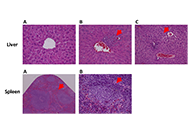 Aloysia citrodora extract as a chemopreventive agent against HPV16-induced lesions: findings from K14-HPV16 miceOpen AccessOriginal ArticleAim: Aloysia citrodora has a long history of traditional use in treating various ailments. This study evaluated the in vivo chemopreventive efficacy and systemic toxicity of an extract of A. ci [...] Read more.Beatriz Medeiros-Fonseca ... Paula A. OliveiraPublished: June 18, 2024 Explor Med. 2024;5:416–433
Aloysia citrodora extract as a chemopreventive agent against HPV16-induced lesions: findings from K14-HPV16 miceOpen AccessOriginal ArticleAim: Aloysia citrodora has a long history of traditional use in treating various ailments. This study evaluated the in vivo chemopreventive efficacy and systemic toxicity of an extract of A. ci [...] Read more.Beatriz Medeiros-Fonseca ... Paula A. OliveiraPublished: June 18, 2024 Explor Med. 2024;5:416–433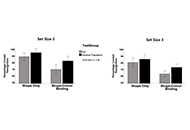 Screening tools for dementia assessment in UK based ethnic minoritiesOpen AccessOriginal ArticleAim: The present study investigated whether commonly used screening tools and assessments for dementia were culturally appropriate for older adults from ethnic minorities (EM) groups living in th [...] Read more.Clara Calia, Mario A. ParraPublished: June 06, 2024 Explor Med. 2024;5:401–415
Screening tools for dementia assessment in UK based ethnic minoritiesOpen AccessOriginal ArticleAim: The present study investigated whether commonly used screening tools and assessments for dementia were culturally appropriate for older adults from ethnic minorities (EM) groups living in th [...] Read more.Clara Calia, Mario A. ParraPublished: June 06, 2024 Explor Med. 2024;5:401–415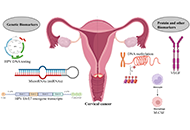 The future of cervical cancer prevention: advances in research and technologyOpen AccessReviewThis article provides an informative overview of the current situation and future trends in cervical cancer prevention. Cervical cancer remains a significant public health concern worldwide and is c [...] Read more.Praveen Kumar Chandra Sekar ... Ramakrishnan VeerabathiranPublished: May 22, 2024 Explor Med. 2024;5:384–400
The future of cervical cancer prevention: advances in research and technologyOpen AccessReviewThis article provides an informative overview of the current situation and future trends in cervical cancer prevention. Cervical cancer remains a significant public health concern worldwide and is c [...] Read more.Praveen Kumar Chandra Sekar ... Ramakrishnan VeerabathiranPublished: May 22, 2024 Explor Med. 2024;5:384–400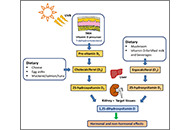 Impact of vitamin D on ultraviolet-induced photoaging and skin diseasesOpen AccessReviewExcessive exposure to ultraviolet (UV) radiation causes premature aging of the skin, known as photoaging. UV radiation induces DNA damage, oxidative stress, inflammatory reactions, and degradation o [...] Read more.Sankalya S. Ambagaspitiya ... Rohan S. DassanayakePublished: May 20, 2024 Explor Med. 2024;5:363–383
Impact of vitamin D on ultraviolet-induced photoaging and skin diseasesOpen AccessReviewExcessive exposure to ultraviolet (UV) radiation causes premature aging of the skin, known as photoaging. UV radiation induces DNA damage, oxidative stress, inflammatory reactions, and degradation o [...] Read more.Sankalya S. Ambagaspitiya ... Rohan S. DassanayakePublished: May 20, 2024 Explor Med. 2024;5:363–383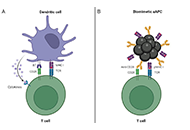 Can magnetic nanoparticles enhance adoptive cell therapy via driving migration of lymphocytes into tumors?Open AccessReviewTherapy of malignant tumors still represents a huge problem for healthcare, since these diseases lead to a high rate of disability and premature death of the population. The main problems of adoptiv [...] Read more.Irina Chikileva ... Mikhail KiselevskiyPublished: May 16, 2024 Explor Med. 2024;5:351–362
Can magnetic nanoparticles enhance adoptive cell therapy via driving migration of lymphocytes into tumors?Open AccessReviewTherapy of malignant tumors still represents a huge problem for healthcare, since these diseases lead to a high rate of disability and premature death of the population. The main problems of adoptiv [...] Read more.Irina Chikileva ... Mikhail KiselevskiyPublished: May 16, 2024 Explor Med. 2024;5:351–362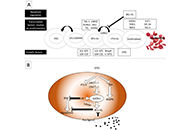 Dysregulation of BCL-2 family proteins in blood neoplasm: therapeutic relevance of antineoplastic agent venetoclaxOpen AccessReviewDuring cellular stress, the master regulators of intrinsic self-death (apoptosis) are BCL-2 family proteins. The BCL-2 family proteins play a key role in apoptosis and are tightly regulated via othe [...] Read more.Faris TayebPublished: May 10, 2024 Explor Med. 2024;5:331–350
Dysregulation of BCL-2 family proteins in blood neoplasm: therapeutic relevance of antineoplastic agent venetoclaxOpen AccessReviewDuring cellular stress, the master regulators of intrinsic self-death (apoptosis) are BCL-2 family proteins. The BCL-2 family proteins play a key role in apoptosis and are tightly regulated via othe [...] Read more.Faris TayebPublished: May 10, 2024 Explor Med. 2024;5:331–350 A review on mushrooms as a versatile therapeutic agent with emphasis on its bioactive constituents for anticancer and antioxidant potentialOpen AccessReviewMushrooms, due to their many medical, preventive, and nutraceutical purposes, as well as their reputation as a folk remedy, have long been an integral part of traditional cuisines. The therapeutic a [...] Read more.Mohd Javed NaimPublished: May 06, 2024 Explor Med. 2024;5:312–330
A review on mushrooms as a versatile therapeutic agent with emphasis on its bioactive constituents for anticancer and antioxidant potentialOpen AccessReviewMushrooms, due to their many medical, preventive, and nutraceutical purposes, as well as their reputation as a folk remedy, have long been an integral part of traditional cuisines. The therapeutic a [...] Read more.Mohd Javed NaimPublished: May 06, 2024 Explor Med. 2024;5:312–330